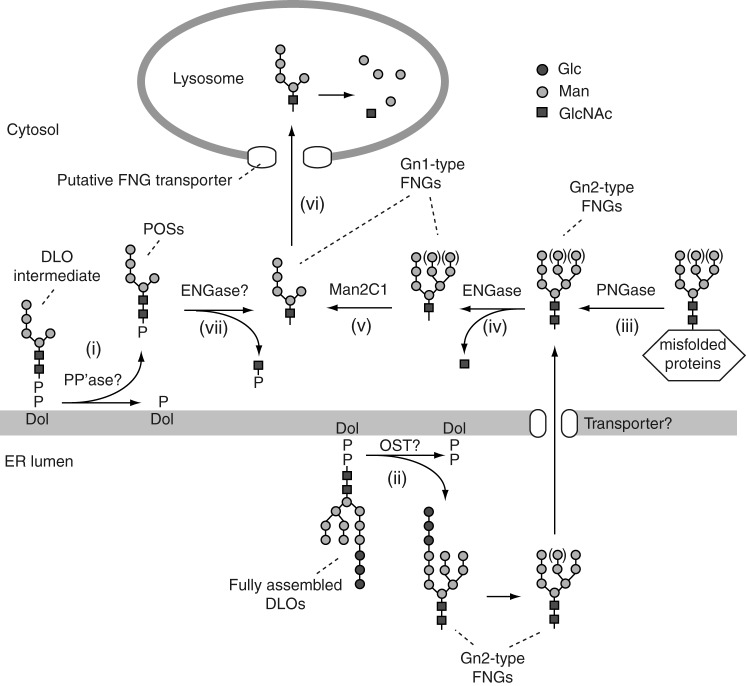FIGURE 1.
Model of the generation and the non-lysosomal degradation of FNGs and POSs in mammalian cells (2, 35). Biosynthetic intermediates of DLOs, e.g. Man5GlcNAc2-PP-Dol, are presumably degraded by a putative pyrophosphatase (PP'ase), releasing POSs into the cytosol (step i). In the cytosol, Gn2-type FNGs are generated by either the degradation of the fully assembled DLO, presumably by oligosaccharyltransferase (step ii) or the deglycosylation of misfolded glycoproteins by PNGase (step iii). ENGase hydrolyzes the Gn2-type FNGs to produce Gn1-type FNGs and free GlcNAc (step iv). The action of ENGase facilitates mannose trimming of the Gn1-type FNGs by Man2C1 (step v) and lysosomal transport of the FNGs via unidentified FNG transporter (step vi). Although the POSs are not readily transported into lysosomes, the removal of the phosphate group from a POS can initiate the lysosomal transport of the resultant FNGs (23). The hydrolysis of POSs by ENGase may facilitate the catabolism of POSs by removing GlcNAc-P from POSs (step vii).

